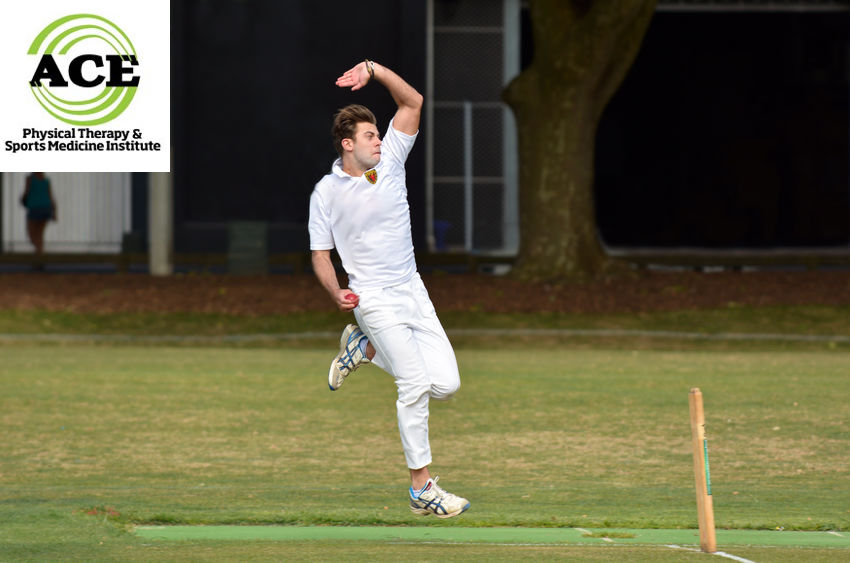PROPER TRAINING TECHNIQUES FOR CRICKET PLAYERS

Tid Bits of Info
- The average speed of a professional bowler is 95-100 mph (150-160 km/h).
- 5 major cricket playing countries are South Africa, Australia, West Indies, New Zealand, and England.
- Cricket can be played a number of ways and one way can last 5 days.
- 11 players are on the cricket field.
- If you injure yourself playing cricket or want to prepare to play, seek the advice and treatment from a Physical Therapist.
Over the last several years, cricket has been increasing in popularity. This growing popularity also means a growth in cricket injuries that can sometimes sideline a player for the season. As seasons have grown longer, the risk of injury has also increased. Proper training techniques can help reduce or prevent injuries, but there is insufficient research to recommend a specific training routine that will reduce injuries.
As the sport has grown in popularity, the seasons have grown now longer. This poses a higher physical demand on the cricket player’s body. The season is nearly year-round and the “off-season” is far shorter than the past. The injuries sustained in cricket are usually not severe, but the “average” injury is becoming more frequent and severe. This leads to more time missed and less playing time.
The incidence and type of injury are relatively consistent across cricket players regardless of age or skill level. The rate of injuries vary based on position with the highest injury among fast bowlers, then bowlers, batsmen and finally fielders. Types of injuries are also consistent based on position. The bowlers deal with low back pain, batsmen with hamstring and quadriceps strains and the fielder’s and wicket keepers injuries are usually secondary to being hit by the ball.
It appears that training techniques should be modified and adjusted to accommodate the demands placed on players determined by the by their specific positions. The movements needed to play the positions on a cricket team are different for each player. These movement demands need to be studied so proper training techniques can be used to help to reduce the frequency of injuries. Most research has been performed on fast bowlers because this is the highest profile player on the team. Several groups are now studying the injury risks of batting, fielding, and wicket-keeping due to the limited data to support a particular training routine.
Conditioning programs focus on improving skills and reducing injuries. Well-conditioned players improve the chance of developing and advancing skill levels, and a proper conditioning program can help reduce the incidence of injuries.
Cricket includes high bursts of activity and periods of rest. The body needs to be able to handle the demands of high-intensity activity or it will be injured. Many times the player must transition from a standstill position to a full out sprint. If the muscles of the body are not prepared properly for this type of activity, injuries can occur and in some instance, the severity can be significant.
The muscles of the core, hips, and entire lower extremity must be conditioned to handle the demands of the cricket game. The lower extremities are subjected to high eccentric muscle loading when the cricketer has to accelerate and decelerate to play the game. The frequent high-velocity deceleration leads to a tremendous “load” on the muscles and without proper preparation many injuries can occur.
Preparing that cricketer for the game has to encompass a well-rounded and thorough conditioning program. The different positions require different “specialty” activities, but a general strengthening program for the entire musculoskeletal system must be part of the program.

The bowlers must strengthen their legs, hips, and core. Their power to bowl comes from their lower extremities and the force must be transmitted through the core to the shoulders. With adequate strength, muscular endurance and bowling technique, the bowler can avoid injuries in most instances.
The batsmen are prone to lower extremity injuries due to sprinting between the wickets. They tend to strain the hamstrings and quadriceps muscles. They have to strength train these muscle groups to develop pure strength, but a portion of the training program has to be speed based. High-velocity strength training including sprints and shuttle runs help to prepare the muscles for the action of the game.
The training program can be designed by a Physical Therapist or a certified personal trainer. These professionals can create a program that will include general conditioning of strength, cardiovascular and flexibility. They will incorporate specifics for the individual based on the physical demands of their position. Seeking the advice and treatment from a Physical Therapist does not require a doctor’s prescription.
Cricket has become very popular in the past decade. Although there are only 5 countries that have a national program, the sport is now being played worldwide by all ages and skill levels. The injury rate has increased and it appears that many of these injuries might have been avoided if the proper training routine was performed by the cricketer. The training program must include specific exercises and drills that will prepare that person for a particular position on the cricket field.
























